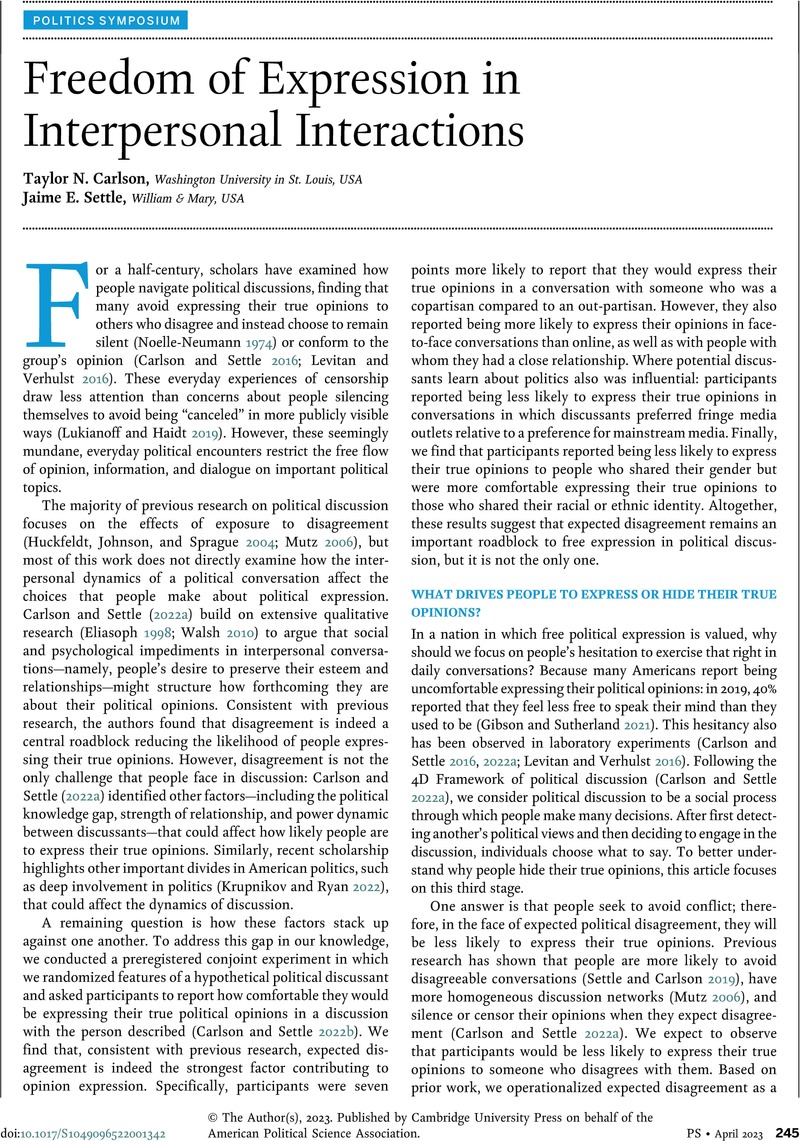Crossref Citations
This article has been cited by the following publications. This list is generated based on data provided by Crossref.
Argyle, Lisa P.
and
Freeze, Melanie
2024.
The Role of Self-Threat and Self-Affirmation in Initiation of Political Conversations.
American Politics Research,
Vol. 52,
Issue. 6,
p.
655.
Harbin, M. Brielle
2024.
What it means to know: gender differences in how white men and women justify their drug-related political beliefs.
International Politics,
Marie, Antoine
2025.
Speech Repression and Threat Narratives in Politics: Social Goals and Cognitive Foundations.
Annals of the New York Academy of Sciences,
McLaughlin, Bryan
Geiger, Nathaniel
and
Rocha, Pedro H. P.
2025.
A Waste of Time? Partisan Deliberative Bias as a Barrier to Political Crosstalk.
Political Behavior,
Lee, Seonghui
and
Kevins, Anthony
2025.
How we think about the political stances of others: evidence on projection from Canada, Germany, and the UK.
West European Politics,
p.
1.


